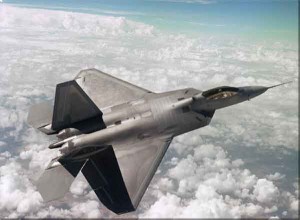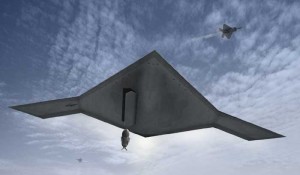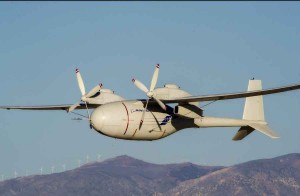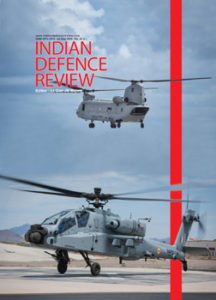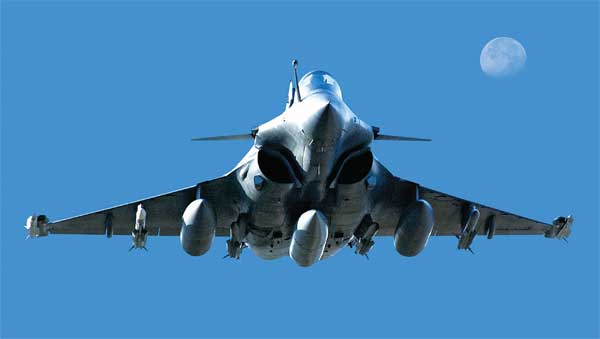
The USAF and the US Navy are leading the evolution of next-generation platforms and technologies. Defence Advanced Research Projects Agency, USAF Research Labs, Boeing ‘Phantom Works’, Lockheed Martin’s ‘Skunk Works’ and NASA are all aiding the work on concepts of ‘Air Dominance’ for 2040 and beyond. US, China and Russia are working on the sixth-generation fighters which will be inducted from 2028 onwards. The Fighter Bomber as a platform, therefore, is still here to stay. More and more of these will become uninhabited or optionally manned. There will be dramatic changes in the aerial platform performance and aerial weapons. The line defining Atmosphere and Space will get smudged. Aerospace will soon become a common domain with more aerospace-craft routinely transiting, taking advantage of each.
The weapon delivering air platforms are becoming faster and more efficient for deeper penetration…
In its quest to dominate the air battlefield of the future, the United States Air Force (USAF) may look to replace the traditional fighter jet with a network of integrated systems disaggregated across multiple platforms. A rapidly evolving global defence landscape is prompting the way the US and its allies develop technology to deter current and emerging threats and to produce the non-linear, game-changing combat capabilities required for national security. It could be a “family of systems” to address the range of threats in a highly contested environment. As Russia and China continue to close the capability gap with the US by building long-range missiles, anti-satellite and anti-aircraft weapons to foil the ability of the US forces to penetrate, the USAF is looking at new ways to dominate the air.
The new strategy will include both stand-off capability and penetrating forces, with increased dependence on space and cyber to infiltrate enemy defences and defend own networks. The USAF has allotted funds in its 2017 budget for experimentation and prototyping in the area of air superiority. These funds are meant to explore concepts like the arsenal plane, hypersonic weapons, directed energy weapons, autonomy and electronic attack. The effort, called “Next Generation Air Dominance,” is planned to be complete by mid- 2018. The USAF will work to find the most effective combination of speed and maneuverability, payload and range for the platform. The right level of stealth or low observability will also be considered.
The USAF and the US Navy (USN) are leading the evolution of next-generation platforms and technologies. Defence Advanced Research Projects Agency (DARPA), USAF Research Labs (AFRL), Boeing ‘Phantom Works’, Lockheed Martin’s ‘Skunk Works’ and NASA are all aiding the work on concepts of ‘Air Dominance’ for 2040 and beyond. US, China and Russia are working on the Sixth-Generation fighters which will be inducted from 2028 onwards. The Fighter Bomber as a platform, therefore, is still here to stay. More and more of these will become uninhabited or optionally manned. There will be dramatic changes in the aerial platform performance and aerial weapons. The line defining Atmosphere and Space will get smudged. Aerospace will soon become a common domain with more aerospace-craft routinely transiting, taking advantage of each. Combat engagements will be at much higher speeds and much greater distances.
One who controls Space will control the Air in future. Aerospace craft will aim to seize control establishing dominance/supremacy over the enemy’s aerospace assets. They will operate under the control/co-ordination of space-based Early Warning and Control satellites with increased Artificial intelligence (AI). Satellite/aircraft-based kinetic and Directed Energy Weapons (DEW) will soon be a reality and will be used for aerial or surface attack. Even if aerospace supremacy cannot be established, a ‘degree of dominance’ in the air space bubble in a given area and given time-space without prohibitive interference by opposing air forces, will be desired.
Expanding Air Threats
The world already has eight overt nuclear powers, one covert nuclear power (Israel) and at least two nuclear aspirants (Saudi Arabia and Iran). The Nuclear Non-Proliferation Treaty (NPT) is still not fully effective. More and more countries are acquiring missile technology. Missiles are becoming faster, more accurate, have longer range and larger multiple warheads. The weapon delivering air platforms are becoming faster and more efficient for deeper penetration. Airborne radars and missiles have much greater ranges. AI will find more optimum and timely combat solutions. The non-state actors and rogue regimes which follow no international norms and ethics, are trying to acquire weapons of mass destruction. They could be a threat difficult to define. Any future air platforms would have to factor in all this.
Uninhabited aircraft technologies are already proven and the future is Uninhabited Aerial Systems (UAS)…
The Basic Concepts and Approach
Concepts from the USAF and industry have so far revolved around supersonic tail-less aircraft. American sixth-generation fighters are to feature AI as a decision aid to the pilot, similar in concept to how advanced sensor fusion was used by the F-22 and F-35. They will also have Positioning, Navigation and Timing (PNT) and communications that allow big data movement between the inter-service’s aircraft. Unlike the previous F-22 and F-35 development programmes that depended on new technologies that drove up cost and delayed introduction, the USAF is keen to follow a path of risk reduction by prototyping, technology demonstration and systems engineering work as possible before creation of an aircraft actually starts. It will not just be an aircraft, but a system of systems including communications, space capabilities, stand-off and stand-in options. The two-service common design and technology efforts including engine, airframe moulds, broadband, IR stealth and new ways to dominate the electromagnetic spectrum.
Another study has concluded that the next-generation USAF fighter should be larger and resembling a bomber than a small, maneuverable traditional fighter. It analysed over 1,450 air-to-air engagements since 1965 and found that long-range weapons and sensors have dramatically decreased instances of dog-fighting. With the increase of air defence systems using electronic and infrared sensors and high-speed weapons, traditional designs relying on small size, high speed and maneuverability, maybe less relevant and easier to intercept. As a result, what is suggested is building a fighter significantly larger relying on enhanced sensors, signature control, networked situational awareness and very-long-range weapons to complete engagements before being detected or tracked.
Larger planes would have greater range that would enable them to be stationed further from a combat zone, have greater radar and IR detection capabilities and carry bigger and longer-range missiles. The USAF Scientific Advisory Board has suggested a Penetrating Counter Air (PCA) platform that would combine long range, supersonic speed, stealth and maneuverability. PCA would have substantially longer range to fly long distances over the Pacific, especially in a situation where airbases in the vicinity of China are not available. It would also escort bombers deep into Russia or China, where the anticipated threat includes advanced networked air defence radars. It would include stealth against low or very high frequency radars which require an airframe with no vertical stabilisers. Another requirement is significantly larger payload than that of current air superiority aircraft like the F-22.
Uninhabited Aerial Systems
Uninhabited aircraft technologies are already proven and the future is Uninhabited Aerial Systems (UAS). The world is in transition. There are some who see the F-35 as the last manned fighter/bomber. Solar-powered UAS are already flying. Currently, the solar-powered Zephyr holds the endurance record for UAVs with 14 days in the air. Dual use (optionally manned) aircraft are also flying. The USAF has already modified F-4s and F-16s to fly them remotely. In France, Dassault leads a multi-nation delta wing UCAV ‘Neuron’ of the size of Mirage 2000.
UK has a Strategic UAS programme ‘Taranis’. UAS are taking-off and landing by themselves including on the moving aircraft carrier (Northrop Grumman X-47B). Autonomous air refueling has been tested. Lockheed Martin’s UCLASS drone ‘Sea Ghost’ looks rather like a stealth bomber and is expected to carry 1,000-lbs class weapons. USA is also working on Hypersonic (Mach 6) Strike Bomber likely to be optionally manned. Uninhabited helicopter convoys will deliver supplies to troops deployed on combat front lines. The US Army’s dramatic shift to a nearly all-unmanned flight over the next three decades is embedded in the UAS roadmap. The USAF’s UAS vision document indicates that by year 2047, every mission would be unmanned.
China’s quick aerospace advancement pace is driving the USAF to react…
Lockheed Martin’s Skunk Works
The Lockheed Skunk Works’ innovation and development of leading edge technology has churned out world beater aircraft like the F-16, SR-71, F-117, F-22 and F-35 and more in the last 70 years. Lockheed Martin has been working alongside DARPA, Air Force and Navy to determine viable approaches to maintain US air dominance capabilities in the post-2035 world. They are exploring new technical capabilities and options for the development of future Next Generation Air Dominance (NGAD) air platforms, as well as potential enhancements to current platforms.
Boeing Phantom Works
Phantom Works is the advanced prototyping arm of the defence and security side of the Boeing Company. Its primary focus is developing advanced military products and technologies, many of them highly classified. Founded by McDonnell Douglas, it continued after Boeing acquired the company. Its logo is similar to one used for the McDonnell Douglas F-4 Phantom fighter.
Phantom Works’ responsibility is to grow those technologies into prototype to then transition those prototypes to the business units to turn into products. Headquartered in Washington DC, Phantom Works has projects in most Boeing locations in the US. Additionally, an international group does modeling and simulation work for various countries including Britain, Australia and India.
Next-Generation American Fighter
The USAF is pursuing development and acquisition of a sixth-generation fighter through the F-X programme to replace its existing aircraft such as the McDonnell Douglas F-15 Eagle and complement existing platforms in service such as the Lockheed Martin F-22 Raptor. The USN is pursuing a similar programme called the Next-Generation Air Dominance intended to complement the smaller Lockheed F-35 and replace its existing aircraft such as the Boeing F/A-18E/F Super Hornet. In April 2013, DARPA initiated a study to try to bridge the USAF and USN concepts. Next-generation fighter efforts will initially be led by DARPA under the ‘Air Dominance Initiative’ to develop prototype X-planes. The USAF and USN will each have variants focused on their mission requirements.
The combat pilot still has backers and still has a place onboard…
In 2016, the USAF announced a change of course to pursue “a network of integrated systems disaggregated across multiple platforms” rather than a ‘sixth-generation fighter’ in its Air Superiority 2030 plan. Dubbed the “Next-Generation Tactical Aircraft (Next-Gen TACAIR)”, the USAF seeks a fighter with “enhanced capabilities in areas such as reach, persistence, survivability, net-centricity, situational awareness, human-system integration and weapons effects”. The future system will have to counter adversaries equipped with next-generation advanced electronic attack, sophisticated integrated air defence systems, passive detection, integrated self-protection, DEW and cyber attack capabilities. It must be able to operate in the anti-access/area-denial environment that will exist in the 2030–2050 timeframe.
The USAF’s new budget request for Fiscal 2019 shows, the service asked for $504 million next year for its Next-Generation Air Dominance research, development, test and evaluation programme. In the next five years of planned spending, the USAF desires to invest roughly $11 billion on Next-Gen Air Dominance. China’s quick aerospace advancement pace is driving the USAF to react. There has been explicit recognition “of the re-emergence of great power competition”. Similarly, the USN has a much higher priority on range and speed. AI and optionally manned are becoming critical requirements generally. There is a need for survivability. Stealth is just one piece of the survivability equation, others such as ultra-lightweight armour and counter-directed energy capabilities are required. The USN acknowledges that the service will need to keep costs low enough to buy a large number of air vehicles as numbers matter.




